Home Hi-Tech Android World ,,,,, After the Zhiyun Z1-Smooth-C test, Cyber Layman still dedicates space to smartphone gimbals, this time trying Smooth-II. Very similar to the previous model, it has some small, but fundamental differences, which could be worth the difference in price between the two accessories. But be careful, if with iPhone it works wonders, with Android it doesn't seem to be up to par.
In appearance, and at 90 percent of functions, the Smooth-II is similar to the previously reviewed Smooth-C model. For all the details of operation, calibration and various setups, therefore, refer to the article prepared previously. It would be useless here to list the thousand functionalities of the accessory, identical to model C.
Package contents
The contents of the package are almost identical. This Smooth-II contains, in addition to the gimbal, the charger for the battery with microUSB socket, an additional weight to stabilize more bulky devices, such as phablets, a protective sticker in case of use of the additional weight and the warranty certificate and manual d 'instructions in English. The difference is in the battery and the charging method . Smooth-II, in fact, contains a single 18650 lithium battery, which is recharged with a classic MicroUSB and which allows you to use the gimbal for about 4 or 5 hours. Also in this version of the gimbal is missing, in bundle, a carrying case. It is not a small lack, considering the delicacy of the gimbal, which deserves to be protected while on the move.
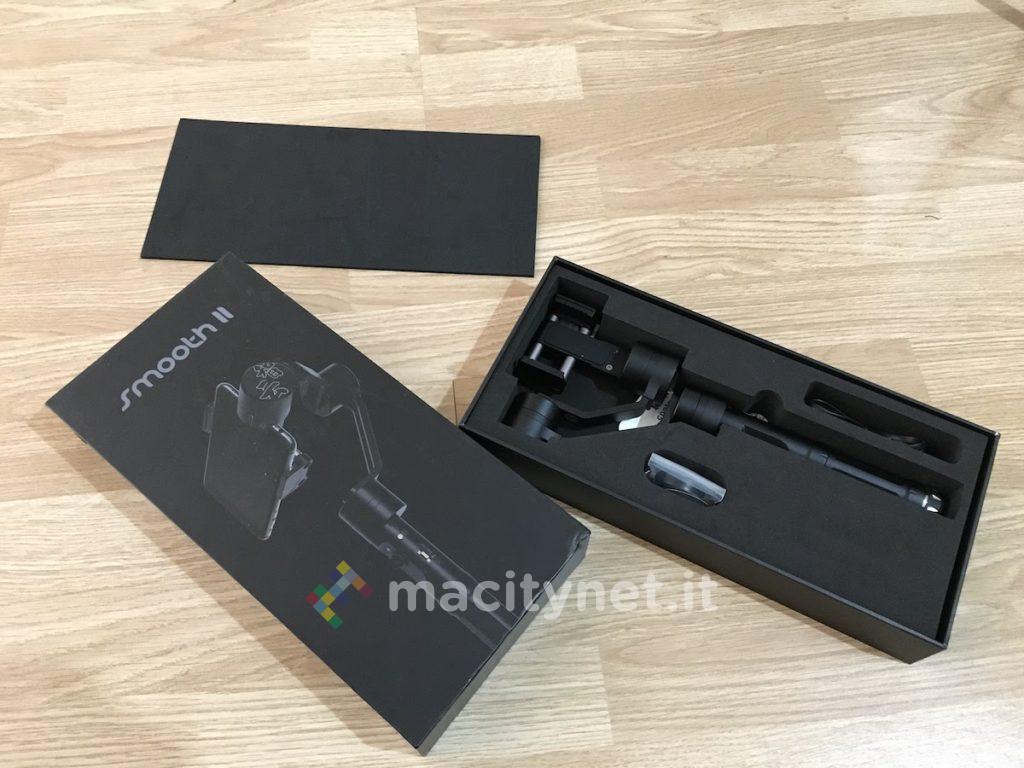
Smooth-II has dimensions of about 115 × 34.5x285mm, with a considerable weight of about 395g. It is a bit heavy, and especially initially, in long shots, it could tire the user. You have to get carried away, also to fully understand the three available modes.
The three modes: Pan (P), Locking (L) and Tilt (T)
When turned on, by default the gimbal is activated in the Pan mode. With this setting, the smartphone remains locked in a horizontal position and perfectly perpendicular to the plane. The gimbal ignores all up and down movements (Tilt), while following any rotations of the handle to the left and right (Pan). To perform a fast Pan, simply turn your wrist and follow the movement of the gimbal horizontally.
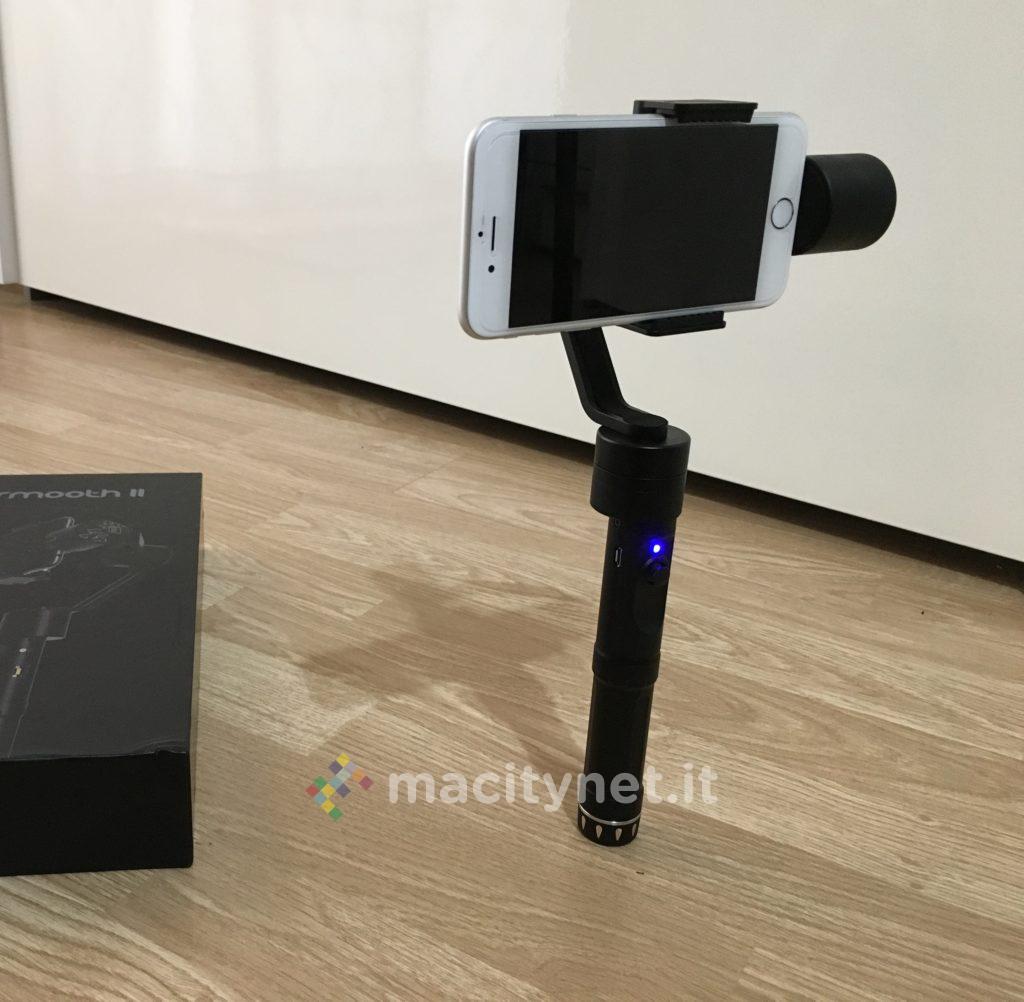
However, it will not be impossible to make the iPhone move vertically. To do this it will be necessary to use the convenient analog stick on the handle of the stick. In this mode, you can use the joystick to manually adjust the shot by tilting the smartphone up or down.
If Pan mode is probably the most usable solution, with a single click of the joystick, the Locking mode will be activated. This locks the smartphone camera in a precise point and the gimbal will ignore any movement of the handle in all directions. In this way it will be possible to frame a specific subject, avoiding sudden and annoying movements.
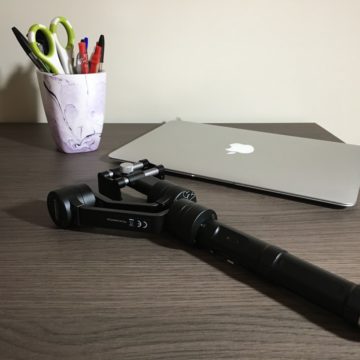
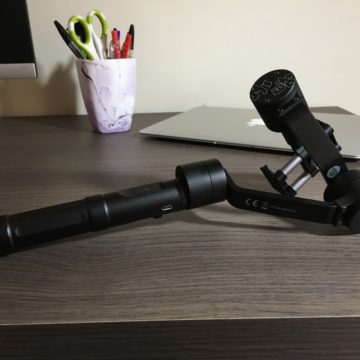
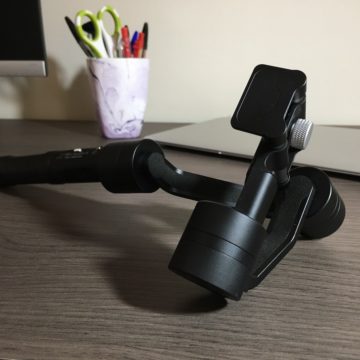
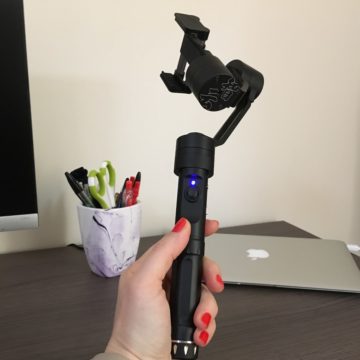
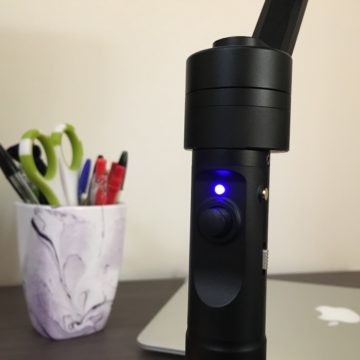
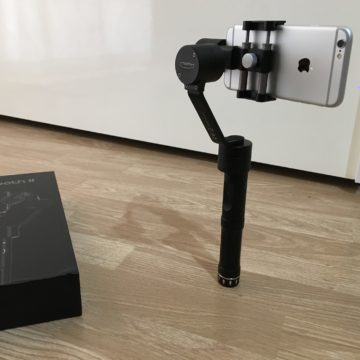
With the double click of the joystick, however, the gimbal switches to Tilt mode. In this case, all movements of the handle are perceived by the gimbal as a variation of the frame. In practice, to obtain a perfectly vertical shot, it will be necessary to keep the handle in the same position. Tilting it forward, the catch will move downwards, vice versa by tilting the handle towards you, the catch will turn upwards. This is the mode that most requires training by the user, but which is perfect for framing landscapes, monuments or in all those situations where you want to record a panoramic shot with a fluid shot in every movement.
That little bit more, bluetooth
Unlike the Smooth-C model, the gimbal under test features bluetooth technology. This means that, thanks to the use of the appropriate app, it will be possible to take photos, record videos, switch between modes, and switch between the front and rear cameras by pressing the dedicated buttons on the handle. In this way, after having placed the smartphone in place, it will no longer be necessary to touch the screen.
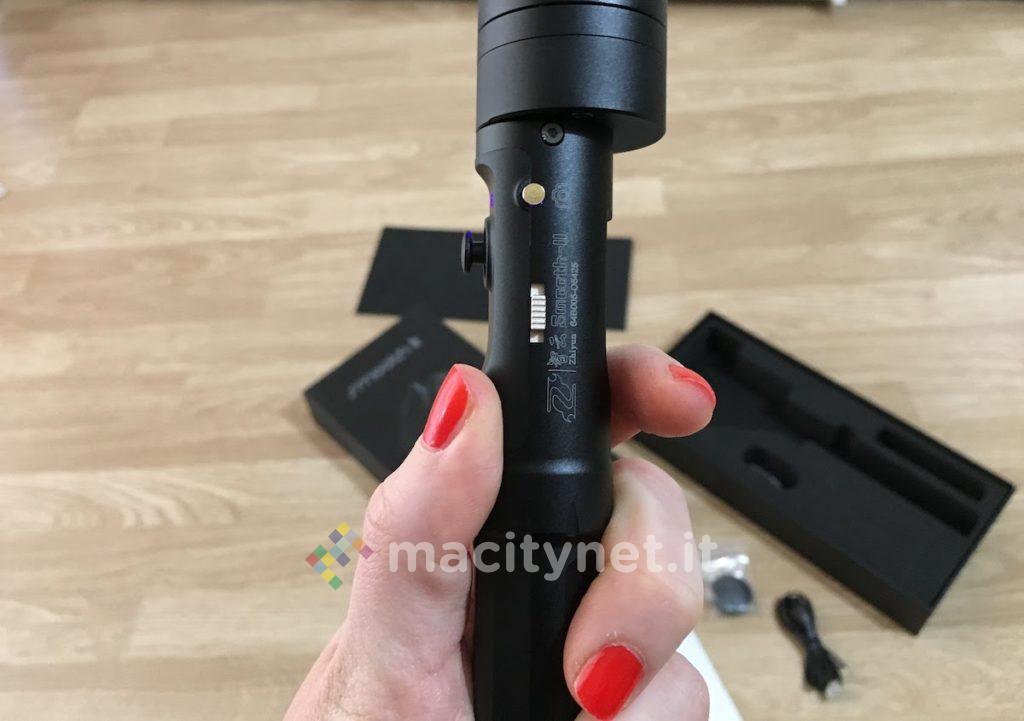
Bluetooth support may seem like a small thing, but it isn't. Holding the gimbal in your hand and having to continually touch the screen to start recording, change cameras or take pictures is an awkward operation, which could also strain the motors, in the event that pressing the screen “forcibly” moves the smartphone.
Thanks to the bluetooth connection, and the dedicated app, it will be possible to use the small shutter button positioned on the handle to fully manage photos and videos. It is true that the gimbal is not used to take pictures, but to stabilize videos, yet the bluetooth function, which allows you to take pictures with the accessory, is extremely useful, for two reasons.
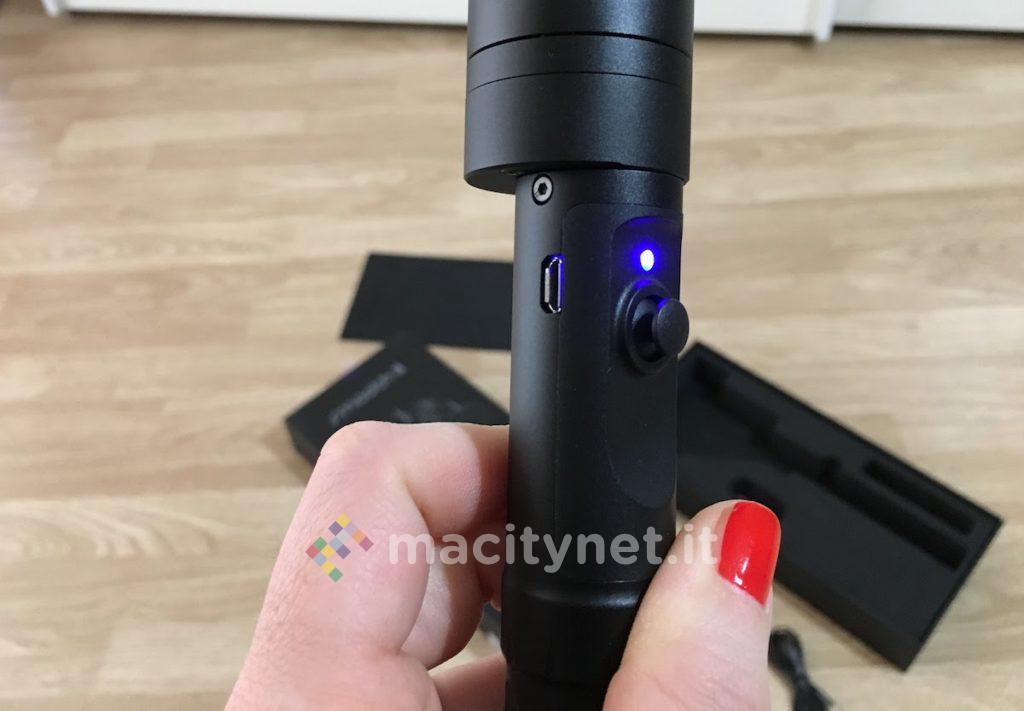
First of all because it's easy to imagine wanting to take photos between videos. Thanks to bluetooth you avoid removing the smartphone from the gimbal, being able to take pictures using the special button, without touching the screen and soliciting the gimbal motors. Moreover, thanks to the gimbal, it will be possible to keep the iPhone in the most disparate positions, taking photos that would otherwise be difficult to obtain without the aid of the motorized stick.
In short, the bluetooth function, although not technologically advanced or original, is a quid pluris that deserves attention, compared to the Smooth C model.
For iPhone and Android, but …
The Smooth-II gimbal is intended for smartphones and phablets up to 6.4 inches, whether iOS or Android. This is not quite the case. Or rather, during our tests we noticed a definite advantage in using the gimbal with iPhone, while with many Android terminals we were disappointed. The following video is a clear example.
With many of the Android terminals tested, whether they are high-end, medium or low-end, it is possible to notice some micro lag, rather annoying, during filming. As if the lens of Android terminals still suffered from a lack of stabilization. A phenomenon that should absolutely not occur having a motorized gimbal in your hands, which adds, precisely, an advanced mechanical stabilization.
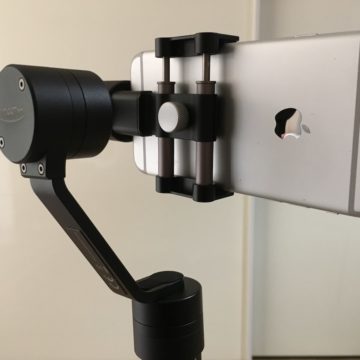
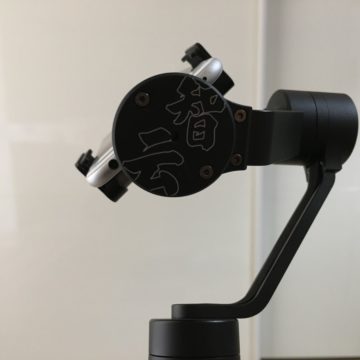
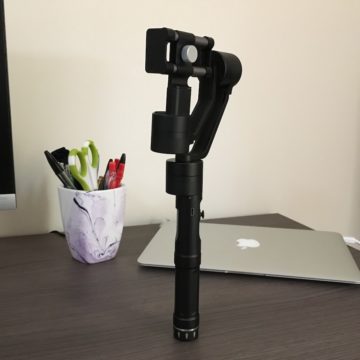
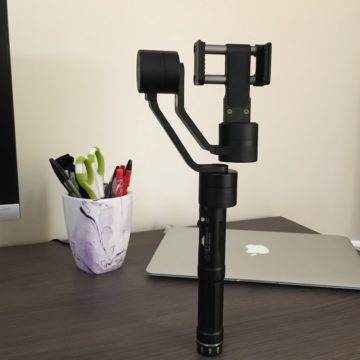
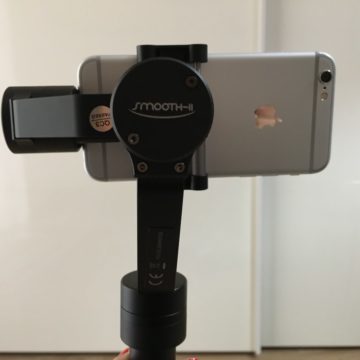
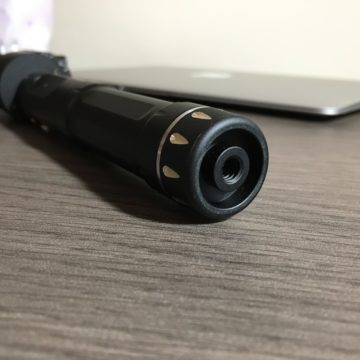
To tell the truth, then, if we had had to use the gimbal only with an Android terminal we would have been disappointed. A completely different story, however, when used with an iPhone. Evidently the sensor reacts perfectly to the mechanical movements of the gimbal, not returning the slightest vibration. In this sense, the gimbal works perfectly and returns still and perfectly stabilized images. The video below was shot entirely (unless otherwise noted), with the Smooth-II gimbal.
Usage
Using the gimbal is not easy, especially initially. During the first attempts you will feel displaced. Even the gimbal will seem like a limit. In fact, it will be difficult to make the sudden movements that you are used to doing with only your smartphone in your hand. With a little training, however, you will realize that the three modes will allow you to perform all the movements necessary for a recovery at best.
Using the jostick will also take some practice. This is because it must be taken into account that, by default, the movements of the joystick correspond to the movements of the smartphone. It is therefore gladly accepted that, by tilting to the left, the smartphone turns to the left, but if you have thousands of hours of flying video games behind you, you may prefer the reverse control for the inclination of the smartphone up and towards. the bass.
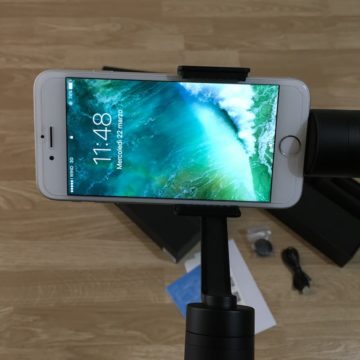
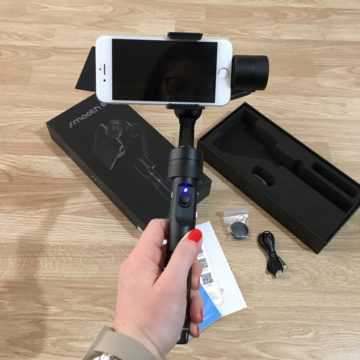

Furthermore, weight is another factor to take into consideration: the almost 400 grams could tire the wrist and arms. Those who record videos only with the smartphone are used to holding 150–165 grams of weight in their hands (or at most around 180 grams in the case of a phablet), while with Zhiyun Z1-Smooth-II to these will be added almost 400 gimbal grams.
As for autonomy, it must be promoted with flying colors. First of all because it allows you to easily get to 4/5 hours of recording, that is to go well beyond the duration allowed by the battery of any iPhone. Furthermore, unlike the Smooth-II model, it will be possible to recharge the gimbal even with a MicroUSB power bank, which is why, even on the move, you will never run out of water.
Conclusions
Smooth-II is a great product, capable of taking your video creations to certainly higher levels. It is expensive, and not for everyone. For example, with Android smartphones it fails to offer optimal results, as on the iPhone. A little gem recommended for those who use their iOS terminal as a main camera.
Thanks to bluetooth support, Zhiyun Smooth-II is on par with more popular alternatives, such as DJI OSMO Mobile for iPhone.
Pro
Cons
Design:  (4.5 / 5) Ease of use:
(4.5 / 5) Ease of use:  (3.9 / 5) Performance:
(3.9 / 5) Performance:  (4,8 / 5) Quality / Price:
(4,8 / 5) Quality / Price:  (5/5) Average:
(5/5) Average:  (4.5 / 5)
(4.5 / 5)
Retail price
Zhiyun Z1-Smooth-II is on sale on Amazon by some sellers. Andoer offers it for 319 euros even if thanks to the code MCTQAZWS , valid for a few days, you will pay 287 euros
,,





